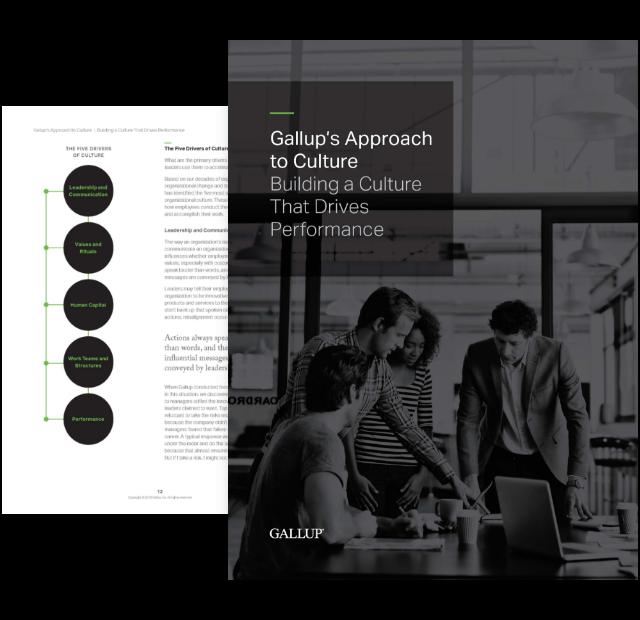Organizational culture, often an elusive concept, plays a pivotal role in a company’s success. It influences everything from employee satisfaction and performance to customer perception and brand loyalty. This comprehensive guide explores the intricacies of organizational culture, delving into its definition, significance, and the key drivers that shape it. We will also examine how leadership influences culture, the detrimental effects of a toxic culture, the critical link between culture and brand, and strategies for cultivating a thriving organizational culture.
What is Organizational Culture?
Defining organizational culture can be challenging. Some view it as a set of core characteristics like “innovative,” “performance-driven,” or “customer-centric.” Others perceive it as the dynamic interplay of various forces within the organization. At its core, organizational culture encompasses “how we do things around here.” It’s the unwritten rules, shared values, beliefs, and behaviors that shape the workplace environment.
 alt: Diverse group of people collaborating in a modern office setting, showcasing a positive and inclusive organizational culture.
alt: Diverse group of people collaborating in a modern office setting, showcasing a positive and inclusive organizational culture.
Each organization possesses a unique culture, reflecting its history, goals, and the people who comprise it. Culture is not inherently good or bad; its effectiveness hinges on its alignment with the organization’s purpose and the needs of its stakeholders. Defining the desired culture is the initial step, but understanding the “why” and “how” is paramount for successful implementation.
The Importance of Company Culture
A robust organizational culture is a powerful differentiator in today’s competitive landscape. It shapes how a company attracts, retains, and engages both customers and employees. A strong culture fosters a sense of belonging and purpose, motivating employees to perform at their best and deliver exceptional customer experiences.
 alt: Two individuals shaking hands, symbolizing the strong partnerships and collaborative spirit fostered by a positive organizational culture.
alt: Two individuals shaking hands, symbolizing the strong partnerships and collaborative spirit fostered by a positive organizational culture.
A positive culture enhances a company’s reputation, attracting top talent who seek alignment with the organization’s mission and values. This alignment creates momentum, driving a seamless customer experience and a compelling employee experience. When everyone, from employees and customers to stakeholders and media, shares a unified understanding of the company’s values, it empowers the organization to achieve its strategic objectives.
While employee engagement and culture are distinct concepts, they are deeply intertwined. Employee engagement focuses on meeting employee needs and fostering high-performing teams. Culture, however, sets the broader tone, influencing how people collaborate, make decisions, and prioritize their work. Engaged employees are the fuel, while culture provides the direction.
 alt: A graphic illustrating the connection between employee understanding of company culture and business health, highlighting the positive correlation between the two.
alt: A graphic illustrating the connection between employee understanding of company culture and business health, highlighting the positive correlation between the two.
Culture is not a “soft” concept; it directly impacts business performance. Research shows a strong correlation between employee understanding of company purpose and culture and various measures of business health, including profitability, customer satisfaction, and employee retention. Key elements of company culture that can significantly improve performance include:
- Strengths-based culture: Focusing on employee strengths maximizes individual and team performance.
- Diversity and inclusion: Creating an inclusive environment fosters innovation and collaboration.
- Safety: Prioritizing safety creates a secure and productive work environment.
- Innovation: A culture of innovation encourages creativity and adaptability.
- Compliance: A strong ethical culture minimizes risk and builds trust.
- High performance: A culture that values achievement drives results.
Leadership’s Influence on Organizational Culture
Culture is rarely accidental; it is often shaped by leadership. Effective leaders intentionally design and nurture a positive culture that aligns with the organization’s purpose and values. However, leadership teams can encounter challenges, such as cultural misalignment following mergers and acquisitions, ineffective mission statements, or negative customer experiences that expose cultural weaknesses.
 alt: A group of people in a meeting, symbolizing leadership's role in shaping and guiding organizational culture.
alt: A group of people in a meeting, symbolizing leadership's role in shaping and guiding organizational culture.
Warning signs of a dysfunctional culture include a declining reputation, eroding customer engagement, difficulty attracting talent, stunted growth, and stalled leadership initiatives. At its worst, a toxic culture can drive away customers and disengage employees, leading to significant business losses.
Toxic Culture: A Recipe for Disaster
A “toxic” culture often stems from conflicting messages within the organization. Misalignment between marketing messages and employee incentives, onboarding information and management training, or leadership behavior and employee expectations creates confusion and undermines trust.
 alt: A person sitting alone at a desk, looking stressed and isolated, representing the negative impact of a toxic work environment.
alt: A person sitting alone at a desk, looking stressed and isolated, representing the negative impact of a toxic work environment.
Failed cultural change initiatives often address only superficial aspects while neglecting the underlying systems, such as organizational structure, performance incentives, and management expectations. A holistic approach is crucial for effective cultural transformation.
Aligning Culture and Brand
Culture and brand are inextricably linked. Culture begins with purpose – why the organization exists. A compelling purpose serves as a compass, guiding the organization’s direction and inspiring its people. Brand, on the other hand, defines how the organization wants to be perceived by the world. It’s the promise made to customers, differentiating the organization from its competitors.
Culture brings purpose and brand to life, shaping how work gets done and how the brand promise is delivered to customers. Successful organizations embed their purpose into their culture, going beyond mission statements and internal messaging to demonstrate their values through actions.
A disconnect between purpose, brand, and culture can lead to unmet expectations, frustrated employees, and dissatisfied customers. Employees are the key to translating brand promises into tangible customer experiences. When employees understand and embody the brand, they deliver on its promise authentically and effectively.
Organizations that prioritize culture building integrate it into all aspects of their operations, rewarding employees who exemplify the desired behaviors and values.
Key Drivers of Company Culture
Gallup has identified five key drivers that shape organizational culture:
 alt: A graphic depicting the five key drivers of company culture: purpose, communication, performance management, social systems, and organizational structure.
alt: A graphic depicting the five key drivers of company culture: purpose, communication, performance management, social systems, and organizational structure.
Purpose: Leadership must clearly define, communicate, and exemplify the organization’s purpose and brand. Actions speak louder than words, and leaders’ behavior sets the tone for the entire organization.
Social Systems: Social interactions and rituals reinforce cultural values. Recognizing and rewarding behaviors aligned with the desired culture strengthens its impact.
Talent: Organizations must select, engage, and develop employees in ways that reflect and support the desired culture. Alignment between talent management practices and cultural values is crucial for creating a cohesive and high-performing workforce.
Structure: Internal structures and processes should support the desired culture. How teams are organized, how communication flows, and how decisions are made all contribute to shaping the cultural environment.
Performance Management: Performance management practices, including goal-setting, accountability, and rewards, must reinforce the desired culture. Misaligned incentives can create conflicts of interest and undermine cultural values.
Activating these five drivers in a coordinated and consistent manner empowers organizations to cultivate a strong and impactful culture.
Can Organizational Culture Change?
Yes, organizational culture can change, but it requires a holistic and sustained effort. Gallup outlines four key steps for cultural transformation:
Assess the current culture: Understand the existing values, beliefs, and behaviors within the organization.
Define the gap: Identify the discrepancies between the current culture and the desired culture.
Align activities, initiatives, and systems: Ensure that all aspects of the organization, from talent management to performance measurement, support the desired culture.
Establish accountability and ongoing evaluation: Track progress, measure impact, and make adjustments as needed to maintain momentum and ensure long-term success.
 alt: A group of people working together in a collaborative environment, symbolizing the positive changes that can be achieved through cultural transformation.
alt: A group of people working together in a collaborative environment, symbolizing the positive changes that can be achieved through cultural transformation.
Cultural change takes time and commitment. While positive results from employee engagement initiatives can be seen within a year, cultural transformation typically takes three to five years to fully realize. Consistent monitoring and evaluation are essential for ensuring that the desired culture takes root and thrives.
Building a Unique and Thriving Culture
Every organization’s optimal culture is unique. Generic culture surveys that categorize organizations into predefined types fail to capture the nuances and distinctiveness of each culture. Effective culture building requires a customized approach that aligns with the organization’s specific purpose, brand, and strategic goals.
 alt: A diverse group of people sitting at a table in a meeting room, working together towards a common goal. This image represents the importance of collaboration and diversity in creating a strong and effective organizational culture.
alt: A diverse group of people sitting at a table in a meeting room, working together towards a common goal. This image represents the importance of collaboration and diversity in creating a strong and effective organizational culture.
Gallup partners with organizations to help them build thriving cultures that drive performance and achieve their strategic objectives. Through in-depth research and practical action plans, Gallup guides organizations in aligning their purpose, brand, and culture to create a powerful and sustainable competitive advantage.
FAQ: Frequently Asked Questions about Organizational Culture
Q: What are some common misconceptions about organizational culture?
A: Some common misconceptions include the belief that culture is solely about perks and benefits, that it can be changed quickly, or that it’s something that HR “owns.” Culture is a complex system that requires a holistic and sustained effort to develop and maintain.
Q: How can I measure the effectiveness of our organizational culture?
A: Measuring culture involves assessing employee perceptions, behaviors, and business outcomes. Surveys, interviews, and observation can provide valuable insights into the current state of the culture and its impact on the organization.
Q: What are some common challenges in changing organizational culture?
A: Resistance to change, lack of leadership buy-in, inconsistent communication, and misaligned systems are common challenges. Overcoming these challenges requires a clear vision, strong leadership, and a commitment to ongoing communication and reinforcement.
We encourage you to share your thoughts and questions about organizational culture in the comments below. Let’s continue the conversation and learn from each other’s experiences.

